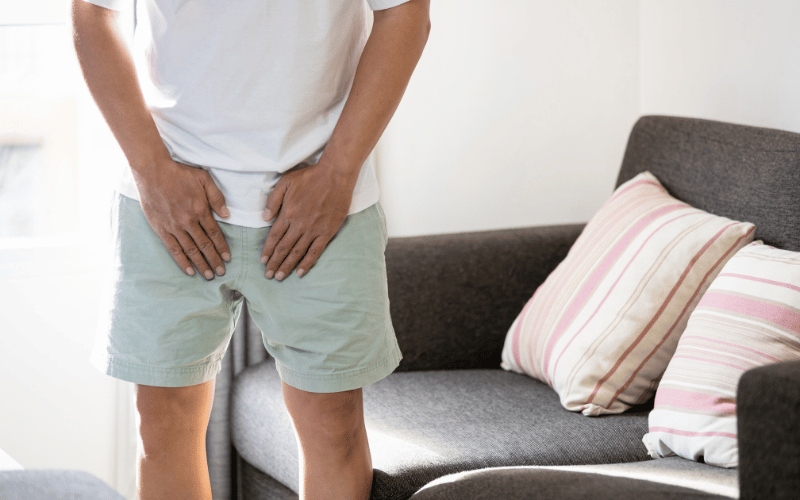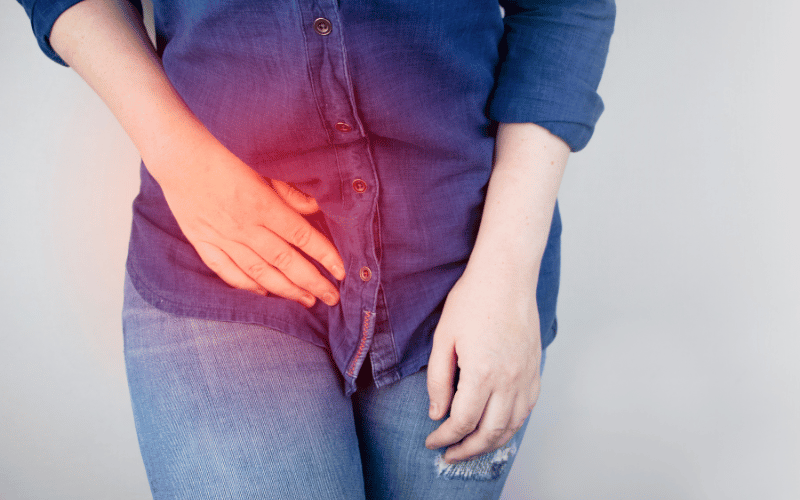Introduction

Inguinal hernias are prevalent medical conditions affecting countless individuals worldwide. A particular type, the direct inguinal hernia, can cause significant discomfort and potential health complications if left unchecked. Despite its widespread occurrence, many remain uninformed about its distinctive symptoms and implications for overall health.
Diving into the specifics, a direct inguinal hernia emerges due to a weakness in the abdominal wall’s muscle, especially in the groin area. This weakening allows a part of the intestine or abdominal tissue to protrude, leading to a visible bulge. Given its origins, it stands apart from other hernia types, warranting special attention.
The urgency in addressing this condition cannot be stressed enough. Ignoring its signs can lead to complications such as strangulation of the herniated tissue, which can be life-threatening. This makes understanding its symptoms crucial.
With the medical landscape continuously evolving and new research coming to light, it’s vital to stay updated on the most recent findings concerning this hernia type. This article seeks to shed light on the 10 unmistakable symptoms of direct inguinal hernias, hoping to equip readers with the knowledge they need to make informed health decisions.
Symptom 1: Visible Lump in the Groin Area

When it comes to direct inguinal hernias, a lump in the groin is the hallmark symptom that often leads individuals to seek medical attention. This lump isn’t some fleeting bump that appears and vanishes. It has a certain permanence, and its presence signifies a deeper issue at play. When you feel this lump, it doesn’t possess the soft consistency of a regular skin cyst. Instead, it feels firm, almost stubborn, and may cause a raised bulge evident through clothing. The reason behind its formation is the hernia itself, forcing its way through a weak spot in the abdominal wall.
Now, this lump isn’t static. Its prominence can change based on several factors. For instance, during periods of rest or while lying down, it might seem to diminish in size. But engage in physical exertion, lift something heavy, or even endure a bout of vigorous coughing, and it asserts its presence even more strongly. This behavior is due to the increased internal abdominal pressure during such activities, causing the hernia to push out more forcefully.
It’s crucial to understand that while not every lump is indicative of a hernia, the persistence of this lump, even when at rest, sets it apart. In some cases, the lump may feel reducible, meaning with gentle pressure, it can be pushed back into the abdomen. But it’s only a temporary respite, as activities or even gravity can make it reappear. These characteristics are especially concerning if the lump is accompanied by discomfort or pain, further supporting the hernia hypothesis.
Given the myriad of skin conditions and superficial infections, a lump might be dismissed as a temporary ailment – perhaps an inflamed hair follicle or a boil. However, doing so can be a grave error, especially if other symptoms accompany this protrusion. A hernia won’t heal on its own; it needs medical intervention. The longer it’s left unaddressed, the higher the risk of complications.
The bottom line is, any unusual lump in the groin area, especially one with the characteristics mentioned above, demands attention. While it’s possible that other conditions might manifest similarly, the consequences of an untreated hernia are too significant to risk. Early detection and timely intervention can save a lot of distress and potential health hazards. (1)